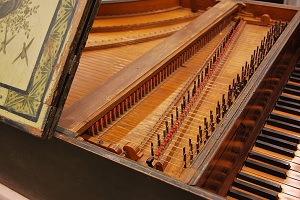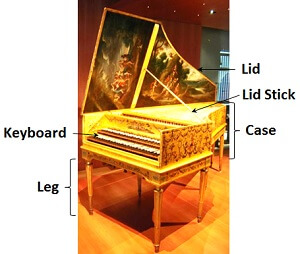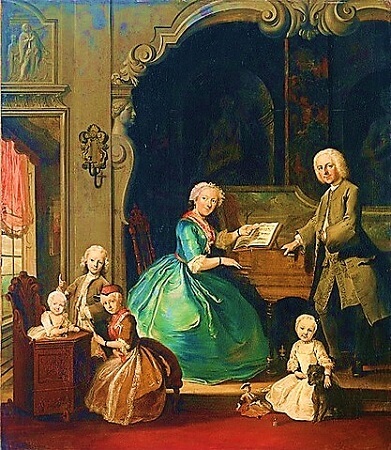 Plucky Strings and Peppy Percussion
Strings and Percussion
Plucky Strings and Peppy Percussion
Strings and Percussion

 Plucky Strings and Peppy Percussion
Strings and Percussion
Plucky Strings and Peppy Percussion
Strings and Percussion

Study the musical selection for one week.
Over the week:
Music lessons over the next two years group musical instruments into five major categories: strings, keyboards, percussion, brass, and woodwinds.
Keyboards include instruments played using a set of keys. Keys are levers pressed by the musician's fingers.
Keyboard instruments include harpsichords, pianos, and organs.
Look at the picture of a keyboard.

Examine a closeup of keys below.

See another picture of a keyboard below. Find the keys and find the strings.

Activity 1: Study the Parts of a Harpsichord

Activity 2: Can You Find It?
Study the lesson image, 'Family Group at a Harpsichord,' by Cornelis Troost, and find the following:
